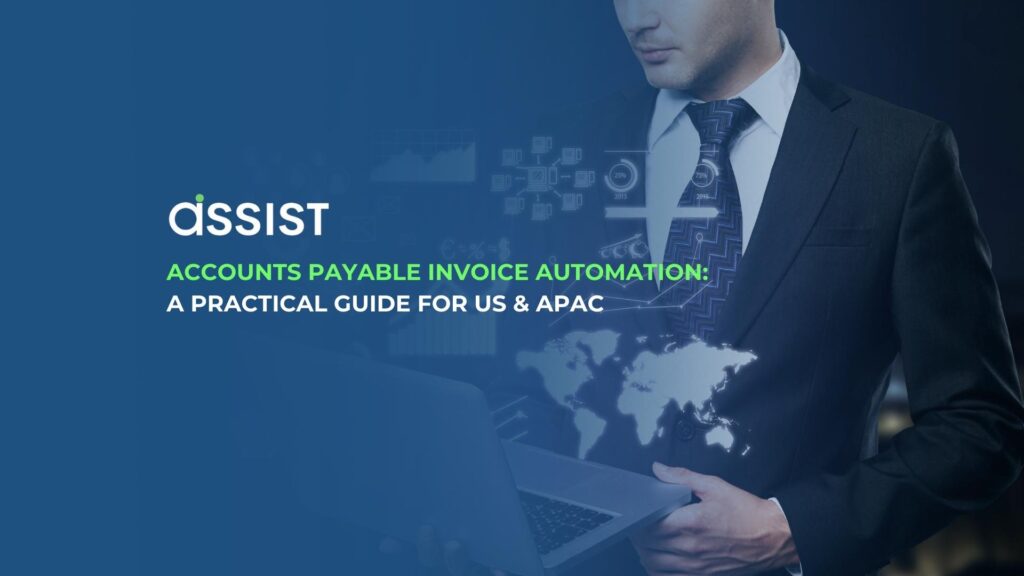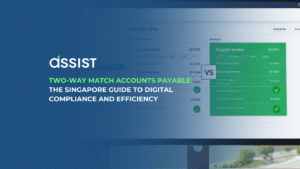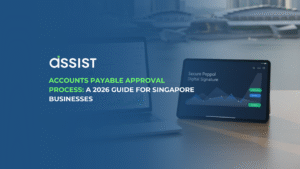If you are evaluating accounts payable invoice automation, this guide gives you a concise, practical roadmap from capture to payment, shows the ROI levers and KPIs that matter, explains US and APAC compliance must-haves like Peppol and Malaysia’s LHDN, and closes with a 90 day implementation plan plus a neutral buyer’s matrix. We will keep things vendor neutral and user focused so we can learn together to the end and help you make a confident decision.
TL;DR — What you’ll get in five bullets
- How AP invoice automation moves an invoice from capture to payment with minimal manual steps
- Practical ROI and KPIs finance leaders can take to the board
- A week by week 90 day rollout plan for your project charter
- Audit controls and region specific compliance for the US and APAC including Peppol and Malaysia’s LHDN
- A neutral buyer’s matrix plus links to deeper references and troubleshooting guides
What is accounts payable invoice automation (AP vs. AR in one minute)
AP invoice automation is the technology backed process of capturing invoices, coding them to the general ledger, validating against POs and receipts, routing for approvals, and preparing payments. The aim is high straight through processing for clean invoices and fast triage for exceptions. If your team still uses AP and AR interchangeably, this primer on the difference between accounts payable vs accounts receivable helps non finance stakeholders align read it in plain language here. For newer operators who want a bigger picture of the back office, this Bookkeeping 101 overview frames where AP fits inside the finance stack start with the fundamentals.
Expected outcomes include lower cost per invoice, shorter cycle times, higher straight through processing rate, stronger internal controls, and better early pay discount capture without burning out the AP team.
How it works: From invoice capture to payment step by step
- Capture
Invoices arrive as PDFs, scans, emails, or structured e invoices. Automation extracts header and line item data and recognizes suppliers. For a deeper dive on what a modern system should pull including tax, unit, UOM, line totals, and vendor IDs, see the overview of the top features of invoice recognition software check the extraction must haves. - Coding and validation
GL accounts, tax codes, and dimensions are auto suggested based on learned patterns. The system checks duplicates, verifies totals, and runs tolerance rules for price and quantity thresholds. - 2 way and 3 way match
PO invoices match against orders and receipts while non PO invoices follow policy for thresholds and justifications. If approvals are the bottleneck, this primer on invoice approval workflow software breaks down routing strategies, escalations, and SLAs optimize your approver matrix. - Approvals
Approvers review exceptions, add comments, and sign off from email or mobile to keep work moving. - Pay and reconcile
Approved invoices flow to payment using check, ACH, wire, card, or virtual card, then post back to the ERP for reconciliation and audit trails.
The goal is to make happy path invoices nearly touchless while giving exception handlers all the context they need to resolve issues quickly.
Try Assist.biz for Free Account Payable AutomationThe business case: ROI and KPI benchmarks you can take to finance
A pragmatic AP leader sells automation with numbers like cost per invoice, cycle time, straight through processing rate, exception rate, on time payment percentage, and early pay discount capture. A simple model starts with invoices per month, percent PO versus non PO, and current FTE minutes per invoice. Apply a conservative improvement such as 30 to 50 percent cycle time reduction and 25 to 40 percent cost reduction, then quantify the downstream impact on DPO and discounts.
Budget varies by volume and feature set. To scope ranges before vendor calls, it helps to glance at Assist’s pricing to understand how tiers often map to usage and features scan ballpark pricing considerations. If you need concrete outcomes to support your deck, the food industry case study and the fire security industry case study show how similar teams drove down processing time and errors see food and beverage results and review industrial services outcomes.
Mini back of napkin calculator
- Inputs: invoices per month, average exceptions percentage, approvers per invoice, labor rate, current cycle time
- Outputs: projected cost per invoice, cycle time, straight through processing rate, potential discount capture
Even a rough model helps justify a pilot and build stakeholder consensus.
Controls, audit, and compliance: What US and APAC teams must get right
Automation should strengthen controls, not bypass them. The essentials include segregation of duties that separates vendor creation, invoice coding and approval, and payment release. Define approval thresholds by department and risk and route non PO invoices accordingly. Log changes to vendor bank details and tolerance rules with dual control. Codify exception service levels and ensure every touch from capture to payment is time stamped and attributable.
APAC compliance mini hub quick cards
- Malaysia LHDN
Mandated e invoicing is rolling out. Learn the basics in this complete guide to e invoicing and keep a copy of LHDN e invoicing explained for your auditors read the overview and get the LHDN explainer. If you need to sanity check payloads, the summary of mandatory e invoice fields is a good starting point review required fields. - Peppol across AU, NZ, SG and beyond
Many APAC markets rely on Peppol for networked e invoicing. If vendors keep asking what that means, the guide on how the Peppol network works explains the routes and roles clearly learn how Peppol routes invoices. - Security and assurance
When the board asks about controls, share a central view of certifications and attestations so stakeholders see the governance behind the platform preview the certifications stack.
US teams should maintain robust audit logs, segregation of duties, and approver matrices. Be ready to demonstrate vendor onboarding, bank detail verification, and sanctions checks where applicable.
Implementation playbook: Your 90 day roadmap
Weeks 1 to 2: Discovery and design
- Inventory invoice volumes, percent PO versus non PO, supplier types, and exception patterns
- Document coding rules, tolerance thresholds, and approval chains. A user guide for approval matrix can speed setup see the matrix setup steps
- Identify success metrics such as target straight through processing percentage and time to approve and pick 10 to 20 diverse pilot suppliers
- Share context internally. When execs ask who is behind the product, the About us page gives a concise background use it for stakeholder briefings
Weeks 3 to 5: Pilot and exception taxonomy
- Configure capture methods including email ingestion, portal, and e invoice and define exception codes for duplicate, missing PO, price variance, and tax mismatch
- Measure baselines and iterate tolerance rules weekly
Weeks 6 to 9: ERP integration and migration
- Map vendor IDs, GL accounts, tax codes, and dimensions
- Set sync cadence and test posting to a sandbox
- If you are ready to visualize the flow, walk through See how it works and the how to sign up for a trial guide to simulate the full loop watch the workflow tour and follow the quick signup steps
Weeks 10 to 12: Supplier onboarding and go live
- Send email templates with portal steps, acceptable formats for PDF, XML, Peppol, and bank data verification
- Train approvers on mobile approvals and service level expectations
- Run hypercare for two invoice cycles and then lock in the new process
ERP integrations: QuickBooks and Xero checklists
Most AP automation projects succeed or fail at the integration layer. Before you begin, confirm required fields, authentication method, error handling, and posting rules.
- QuickBooks teams can preview the process via integration with QuickBooks and a walkthrough of how it works with QuickBooks so you know exactly what posts, when, and how see QuickBooks integration details and walk through the QuickBooks flow
- Xero teams should start with integration with Xero and the combined primer on integrating with Xero and QuickBooks for a side by side view of mapping and permissions review Xero integration specifics and compare the integration steps
Before go live, script failure tests such as invalid tax code, duplicate invoice, and missing vendor to confirm that exceptions route properly and logs are complete.
Try Assist.biz for Free Account Payable Automation
Supplier onboarding kit templates and data quality rules
To get adoption, make things easy for suppliers. Share simple how to send an invoice instructions with supported formats and max file sizes. Provide a portal link and timeline expectations such as invoices received by Friday 5 p.m. process next Monday. Validate bank details with dual control, run duplicate checks, and confirm tax IDs. If your team needs to exchange data with another system, the guide on export to CSV and setting up fields explains how to structure reliable handoffs follow the export checklist.
Neutral buyer’s matrix: Choosing AP invoice automation for US and APAC
Use a simple matrix to compare platforms on what matters to your team.
- Capture methods such as OCR accuracy at line level, native e invoice support, and email ingestion
- Matching and coding including 2 way and 3 way match, tolerance rules, and GL or tax auto coding
- Approvals and SLAs with multi level routing, escalations, and mobile approvals
- Payments with built in options or bank integrations and cross border payouts for APAC suppliers
- Compliance readiness for Peppol, LHDN, and country specific e invoicing
- Security and audit including certifications, segregation of duties, and immutable logs
- Integrations with accounting and ERP such as QuickBooks, Xero, SAP, Oracle, and NetSuite
- Analytics for KPIs, exception heatmaps, and audit dashboards
If you are comparing for Southeast Asian SMEs, you might also skim the best invoice automation platforms in Malaysia 2025 article. Not to pick winners globally but to borrow an evaluation checklist you can adapt to any region borrow the evaluation criteria.
Pitfalls and troubleshooting: Avoid these seven common issues
- Duplicate invoices slipping through. Enforce vendor plus number plus amount dedupe together with hash based checks
- Tax totals that do not tally. Align tax calculation with ERP rules and confirm currency rounding. If mismatches occur, the short guide on what to do if the total tax amount is not tally shows where to look first use the tax checklist
- Exports that fail to Xero or QuickBooks. Permissions, field mapping, or posting rules are common culprits and the article on why you may see cannot be send to Xero or QuickBooks walks through fixes step by step start with these integration fixes
- Approvals stuck in inboxes. Add escalations and out of office delegation
- Vendor bank detail risk. Require dual approval and alerts on changes
- PO mismatch overload. Tune tolerances by category and supplier criticality
- Shadow processes over email. Replace email approvals with in app actions to preserve the audit trail
Evidence: Mini case snapshots and before and after KPIs
- Food manufacturing
High volume with many line items benefited from automated line level extraction and 3 way match which cut cycle time from weeks to days and reduced exception handling by focusing on tolerances that mattered. For details, the food industry case study offers the complete before and after breakdown see the implementation milestones. - Industrial services and fire security
Mobile approvals and better coding rules decreased late fees and improved on time payments. The fire security case study walks through the metrics and process fixes review KPI outcomes.
For ongoing product depth and feature changes, it is wise to review the FAQ and the latest release notes which summarize improvements that often matter to AP teams during audits browse common questions and track what is new.
Try Assist.biz for Free Account Payable AutomationConclusion and next step
If you would like to experience AP invoice automation with built in controls and APAC friendly features, you can register and try Assist for free. The how to sign up for a trial guide makes it a five minute task start your free trial with this quick guide.
After signing up, take a quick tour of how it works and browse features and benefits to map capabilities to your process walk the workflow and review feature details. If you prefer a guided walkthrough, you can book a demo or contact us and if you are budgeting ahead of time, pricing is published for easy comparison book a tour, reach the team, and estimate your costs.
For background and trust signals, the About us and privacy policy pages summarize who we are and how we handle data meet the team and review privacy.




